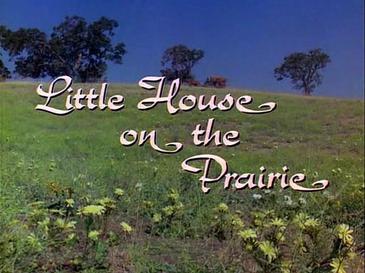
15 Nov The Ingalls: A Model Export Family
There’s a saying in economics: “The source of growth is the domestic market; focusing on exports is outdated.”
Or in simpler terms: “Don’t worry about falling exports; we can grow just fine on our own.” 🤨
But let’s see what Caroline Ingalls can teach us about this.
For those of us who loved The Little House on the Prairie, you’ll recall the adventures (and misadventures) of Laura Ingalls and her family. While I won’t recap the series, let’s borrow a few lessons from the Ingalls’ life.
Caroline Ingalls: The Savvy Trader
Caroline knew the value of exports. When her chicken coop was thriving, she would pack up surplus eggs to sell to the infamous Harriet Oleson. In technical terms, Caroline exported the eggs her family didn’t consume.
In one episode, Harriet tried to pay her less, but thanks to Nels Oleson’s intervention, Caroline got a fair price. With that money, she bought sugar and cloth. She understood trade perfectly: selling her surplus to acquire what she couldn’t produce.
Charles Ingalls: The Hardworking Exporter
Charles worked tirelessly to grow wheat. Did the family eat all the wheat they harvested? Not at all. Charles sold a large portion of it. In one episode, he even switched to corn, a decision that brought challenges (and tears, of course—it is Charles Ingalls).
The Ingalls didn’t rely solely on their internal market (their household). They sold their surplus to access goods they couldn’t produce themselves.
A Lesson for Nations
Now, some might say, “That’s a family; countries are different.” But the analogy isn’t far-fetched. If the Ingalls relied only on their own production, they’d never have sugar, fabric, or even candy for little Carrie.
Countries operate similarly. If Bolivia relied solely on its domestic market, where would the dollars come from to buy the goods we don’t produce—like cell phones, cars, clothes, or even apples and onions?
Humans don’t “bet” on an export model; trade is intrinsic to who we are. No country can produce everything it consumes.
Now imagine Bolivia decided to ban exports entirely. How would we acquire the foreign currency needed to buy essential imports? If you tried paying for a phone in Peru, China, or the U.S. with Bolivian bolivianos, you’d be met with a puzzled, “We don’t accept that.”
Would you take quetzales as payment? Exactly.
The Reality of Economic Growth
Bolivia’s economic boom from 2010–2015—the so-called “miracle”—was fueled by a surge in natural gas exports. And where did those reserves come from? They were discovered during the much-maligned neoliberal era.
Caroline Ingalls understood this intuitively. By selling what she didn’t need, she gained access to the goods her family couldn’t produce. The lesson is timeless: exports drive growth and open doors to a better quality of life.
Let’s not forget that.
Saludos!
Mauricio Medinaceli Monrroy
August 25, 2023



No Comments